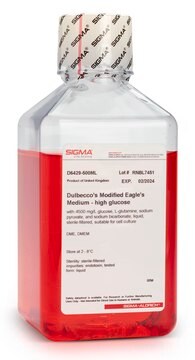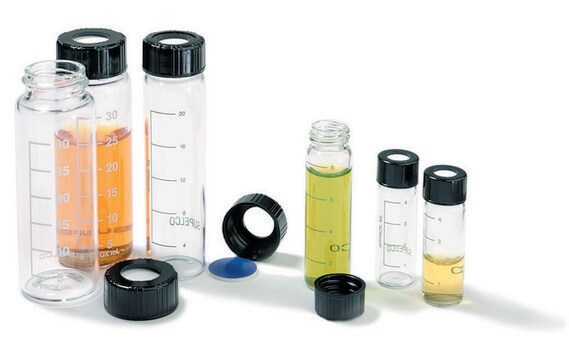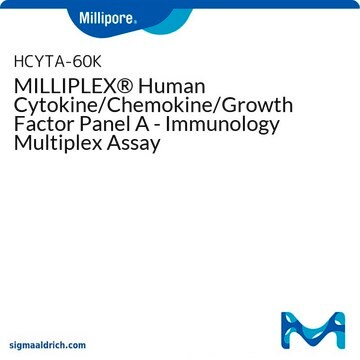MABS456
Anti-PTP1B Antibody (Oxidized), clone scFvs 45
clone scFvs 45, from chicken
Synonym(s):
Tyrosine-protein phosphatase non-receptor type 1, Protein-tyrosine phosphatase 1B, PTP-1B
Sign Into View Organizational & Contract Pricing
Select a Size
All Photos(3)
Select a Size
Change View
About This Item
UNSPSC Code:
12352203
eCl@ss:
32160702
NACRES:
NA.41
Recommended Products
General description
PTP1B is the prototypic member of the protein tyrosine phosphatase (PTP) family, which comprises at least 37 proteins. The family is characterized by a catalytic phosphatase domain of approximately 240 amino acids, and includes both transmembrane and cytosolic enzymes. The PTPs have high substrate specificity for phosphotyrosyl proteins. At the primary sequence level, PTPs share little similarity with the protein serine phosphatases, protein threonine phosphatases, or the acid and alkaline phosphatases. PTP1B is a negative regulator of insulin and leptin signal transduction and may be a potential therapeutic target for diabetes and obesity. Insulin also influences the expression of splice variants of PTP1B.
Specificity
This antibody only reacts with the oxidized form.
Immunogen
Epitope: PTP1B-OX
Recombinant protein corresponding to the PTP1B-OX of human PTP1B (Oxidized).
Application
Anti-PTP1B Antibody (Oxidized), clone scFvs 45 | MABS456 is an antibody against PTP1B Antibody for use in Immunoprecipitation, Inhibits Activity/Function.
Immunoprecipitation Analysis: This antibody immunoprecipitated PTP1B (Oxidized) recombinant (aa 1-321; WT and CASA mutant) (Haque, A., et al. (2011). Cell. 147:185-198).
Immunoprecipitation Analysis: This antibody immunoprecipitated PTP1B (Oxidized) recombinant (aa 1-321; WT and CASA mutant) (Haque, A., et al. (2012). Nature America. 7(12):2127-2143).
Inhibits Activity/Function Analysis: A representative lot detected PTP1B (Oxidized) in recombinant PTP1B (aa 1-321; WT and CASA mutant) and scFv45) (Haque, A., et al. (2011). Cell. 147:185-198).
Inhibits Activity/Function Analysis: A representative lot detected PTP1B (Oxidized) in recombinant PTP1B (aa 1-321; WT and CASA mutant)and scFv45) (Haque, A., et al. (2012). Nature America. 7(12):2127-2143).
Immunoprecipitation Analysis: This antibody immunoprecipitated PTP1B (Oxidized) recombinant (aa 1-321; WT and CASA mutant) (Haque, A., et al. (2012). Nature America. 7(12):2127-2143).
Inhibits Activity/Function Analysis: A representative lot detected PTP1B (Oxidized) in recombinant PTP1B (aa 1-321; WT and CASA mutant) and scFv45) (Haque, A., et al. (2011). Cell. 147:185-198).
Inhibits Activity/Function Analysis: A representative lot detected PTP1B (Oxidized) in recombinant PTP1B (aa 1-321; WT and CASA mutant)and scFv45) (Haque, A., et al. (2012). Nature America. 7(12):2127-2143).
Research Category
Signaling
Signaling
Research Sub Category
Signaling Neuroscience
Signaling Neuroscience
Quality
Evaluated by Immunoprecipitation in recombinant PTP1B (aa 1-321; WT and CASA mutant) and scFv45 cell lysate.
Immunoprecipitation Analysis: 278 ng of this antibody detected PTP1B (Oxidized) in recombinant PTP1B (aa 1-321; WT and CASA mutant) and scFv45 cell lysate.
Immunoprecipitation Analysis: 278 ng of this antibody detected PTP1B (Oxidized) in recombinant PTP1B (aa 1-321; WT and CASA mutant) and scFv45 cell lysate.
Target description
~37 kDa observed. The calculated molecular weight is 50kDa however PTP1B has been observed at ~37 kDa since it is a truncated form (aa 1-321). Uncharacterized band(s) may appear in some lysates.
Linkage
Replaces: 04-1140
Physical form
Format: Purified
Ni-NTA agarose
Purified chicken monoclonal in buffer containing 0.1 M Tris-Glycine (pH 7.4), 150 mM NaCl with 0.05% sodium azide.
Storage and Stability
Stable for 1 year at 2-8°C from date of receipt.
Other Notes
Concentration: Please refer to lot specific datasheet.
Disclaimer
Unless otherwise stated in our catalog or other company documentation accompanying the product(s), our products are intended for research use only and are not to be used for any other purpose, which includes but is not limited to, unauthorized commercial uses, in vitro diagnostic uses, ex vivo or in vivo therapeutic uses or any type of consumption or application to humans or animals.
Not finding the right product?
Try our Product Selector Tool.
Storage Class
12 - Non Combustible Liquids
wgk_germany
WGK 1
flash_point_f
Not applicable
flash_point_c
Not applicable
Certificates of Analysis (COA)
Search for Certificates of Analysis (COA) by entering the products Lot/Batch Number. Lot and Batch Numbers can be found on a product’s label following the words ‘Lot’ or ‘Batch’.
Already Own This Product?
Find documentation for the products that you have recently purchased in the Document Library.
Masaki Takasugi et al.
Nature communications, 8, 15729-15729 (2017-06-07)
Cellular senescence prevents the proliferation of cells at risk for neoplastic transformation. However, the altered secretome of senescent cells can promote the growth of the surrounding cancer cells. Although extracellular vesicles (EVs) have emerged as new players in intercellular communication
Our team of scientists has experience in all areas of research including Life Science, Material Science, Chemical Synthesis, Chromatography, Analytical and many others.
Contact Technical Service







